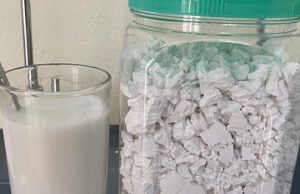
The family bathroom, being a frequently used space, tends to remain moist. In modern design, bathrooms often feature a toilet and sink within enclosed structures for convenience and space efficiency. This has sparked debates on whether the bathroom door should be left open or closed after use, as proponents on both sides have their own reasons for supporting either option.
Should the bathroom be closed or opened after use?
The bathroom is one of the places where bacteria accumulate the most in the house; Stains, mold, moss, etc. often appear if not cleaned regularly.
Many people have the habit of opening the door after using the bathroom to allow air to circulate, the bathroom to be dry, and to limit bacteria in this area. However, some others believe that after using the bathroom, it is necessary to close the door to prevent bacteria from spreading to other spaces in the house. So should the bathroom be closed or opened after use?

With the characteristics of most apartments today, the best way after using the bathroom is to close the door and open the ventilation fan or window in this room. This is a way to help the bathroom stay dry and prevent bacteria from spreading from the bathroom to other rooms in the house.
You should not open the bathroom door because many types of harmful bacteria that are difficult to see with the naked eye will have a negative impact on the health of those in the house, not to mention the bad smell or musty smell that makes everyone uncomfortable.
How to eliminate bad odors in the bathroom

Besides regularly cleaning the toilet with specialized detergents, you should place waxes or aromatic essential oils in the bathroom. In addition, you can take advantage of scented soap shavings, put them in a thin mesh (you can take a mask or a sock) and hang it in the toilet. This method is both economical and effective in eliminating odors.
Should the sewer line linked to the floor drain go without regular cleaning, it is prone to the accumulation of dirt, hair, and other substances, resulting in unpleasant odors and the proliferation of bacteria over time.
To address this concern, consider the following steps:
– Pour a pot of hot water into the drain.
– Mix baking soda with a little dishwashing liquid, add hot water, mix well and pour the solution down the drain.
– Pour a little more vinegar down the drain, the vinegar and baking soda react together to create lots of foam.
– Wait for about 10 minutes then pour hot water into the drain and rinse thoroughly.
Source: Yeucuocsong



















